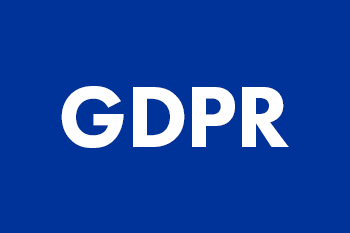Metformin is a potential therapeutic for COVID-19/LUAD by regulating glucose metabolism | Scientific Reports – Nature.com
June 4, 2024
Hu, H. et al. Three subtypes of lung cancer fibroblasts define distinct therapeutic paradigms. Cancer Cell 39, 15311547 (2021).
Article CAS PubMed PubMed Central Google Scholar
Musika, W., Kamsa-Ard, S., Jirapornkul, C., Santong, C. & Phunmanee, A. Lung cancer survival with current therapies and new targeted treatments: A comprehensive update from the Srinagarind Hospital-based cancer registry from (2013 to 2017). Asian Pac. J. Cancer Prev. 22, 25012507 (2021).
Article PubMed PubMed Central Google Scholar
She, L. et al. Cost-effectiveness analysis of pembrolizumab versus chemotherapy as first-line treatment in locally advanced or metastatic non-small cell lung cancer with PD-L1 tumor proportion score 1% or greater. Lung Cancer 138, 8894 (2019).
Article PubMed Google Scholar
Scott, S. C. & Hann, C. L. Immunotherapy for small cell lung cancer: Established applications and novel approaches. Clin. Adv. Hematol. Oncol. 19, 654663 (2021).
PubMed Google Scholar
Zhou, F. & Zhou, C. C. Immunotherapy in non-small cell lung cancer: Advancements and challenges. Chin. Med. J. (Engl.) 134, 11351137 (2021).
Article CAS PubMed Google Scholar
Boyero, L. et al. Primary and acquired resistance to immunotherapy in lung cancer: Unveiling the mechanisms underlying of immune checkpoint blockade therapy. Cancers (Basel) 12, 3729 (2020).
Article CAS PubMed Google Scholar
Ghantous, A., Hernandez-Vargas, H., Byrnes, G., Dwyer, T. & Herceg, Z. Characterising the epigenome as a key component of the fetal exposome in evaluating in utero exposures and childhood cancer risk. Mutagenesis 30, 733742 (2015).
Article CAS PubMed PubMed Central Google Scholar
Majumder, J. & Minko, T. Recent developments on therapeutic and diagnostic approaches for COVID-19. AAPS J. 23, 14 (2021).
Article CAS PubMed Google Scholar
Liang, W. et al. Cancer patients in SARS-CoV-2 infection: A nationwide analysis in China. Lancet Oncol. 21, 335337 (2020).
Article CAS PubMed PubMed Central Google Scholar
Moubarak, S. et al. COVID-19 and lung cancer: Update on the latest screening, diagnosis, management and challenges. J. Int. Med. Res. 50, 665781321 (2022).
Article Google Scholar
Strang, P. & Schultz, T. Dying with cancer and COVID-19, with special reference to lung cancer: Frailty as a risk factor. Cancers (Basel) 14, 6002 (2022).
Article PubMed Google Scholar
Elkrief, A. et al. Learning through a pandemic: The current state of knowledge on COVID-19 and cancer. Cancer Discov. 12, 303330 (2022).
Article CAS PubMed Google Scholar
Roncon, L., Zuin, M., Rigatelli, G. & Zuliani, G. Diabetic patients with COVID-19 infection are at higher risk of ICU admission and poor short-term outcome. J. Clin. Virol. 127, 104354 (2020).
Article CAS PubMed PubMed Central Google Scholar
Kim, Y. S. et al. Metformin use reduced the overall risk of cancer in diabetic patients: A study based on the Korean NHIS-HEALS cohort. Nutr. Metab. Cardiovasc. Dis. 30, 17141722 (2020).
Article CAS PubMed Google Scholar
Cheung, K. S. et al. Metformin use and gastric cancer risk in diabetic patients after Helicobacter pylori eradication. J. Natl. Cancer Inst. 111, 484489 (2019).
Article PubMed Google Scholar
Ma, S., Zheng, Y., Xiao, Y., Zhou, P. & Tan, H. Meta-analysis of studies using metformin as a reducer for liver cancer risk in diabetic patients. Medicine (Baltimore) 96, e6888 (2017).
Article CAS PubMed Google Scholar
El-Benhawy, S. A. & El-Sheredy, H. G. Metformin and survival in diabetic patients with breast cancer. J. Egypt Public Health Assoc. 89, 148153 (2014).
Article PubMed Google Scholar
Scheen, A. J. Metformin and COVID-19: From cellular mechanisms to reduced mortality. Diabetes Metab. 46, 423426 (2020).
Article CAS PubMed PubMed Central Google Scholar
Li, Y. et al. Metformin in patients with COVID-19: A systematic review and meta-analysis. Front. Med. (Lausanne) 8, 704666 (2021).
Article PubMed Google Scholar
Saygili, E. S., Karakilic, E., Mert, E., Sener, A. & Mirci, A. Preadmission usage of metformin and mortality in COVID-19 patients including the post-discharge period. Ir. J. Med. Sci. 191, 569575 (2022).
Article CAS PubMed Google Scholar
Usman, A. et al. Metformin use in patients hospitalized with COVID-19: Lower inflammation, oxidative stress, and thrombotic risk markers and better clinical outcomes. J. Thromb. Thrombolysis 53, 363371 (2022).
Article CAS PubMed PubMed Central Google Scholar
Lu, T. et al. Metformin inhibits human non-small cell lung cancer by regulating AMPK-CEBPB-PDL1 signaling pathway. Cancer Immunol. Immunother. 71, 17331746 (2022).
Article CAS PubMed Google Scholar
Brancher, S. et al. Metformin use and lung cancer survival: A population-based study in Norway. Br. J. Cancer 124, 10181025 (2021).
Article CAS PubMed Google Scholar
Kang, J. et al. The associations of aspirin, statins, and metformin with lung cancer risk and related mortality: A time-dependent analysis of population-based nationally representative data. J. Thorac. Oncol. 16, 7688 (2021).
Article CAS PubMed Google Scholar
Ma, Z., Patel, N., Vemparala, P. & Krishnamurthy, M. Metformin is associated with favorable outcomes in patients with COVID-19 and type 2 diabetes mellitus. Sci. Rep. 12, 5553 (2022).
Article ADS CAS PubMed PubMed Central Google Scholar
Bakouny, Z. et al. COVID-19 and cancer: Current challenges and perspectives. Cancer Cell 38, 629646 (2020).
Article CAS PubMed PubMed Central Google Scholar
Chen, C. Y., Chen, J., He, L. & Stiles, B. L. PTEN: Tumor suppressor and metabolic regulator. Front. Endocrinol. (Lausanne) 9, 338 (2018).
Article PubMed Google Scholar
Hua, H. et al. Targeting mTOR for cancer therapy. J. Hematol. Oncol. 12, 71 (2019).
Article PubMed PubMed Central Google Scholar
Del, C. J. et al. Simvastatin and metformin inhibit cell growth in hepatitis C virus infected cells via mTOR increasing PTEN and autophagy. PLoSOne 13, e191805 (2018).
Google Scholar
Ndembe, G. et al. Caloric restriction and metformin selectively improved LKB1-mutated NSCLC tumor response to chemo- and chemo-immunotherapy. J. Exp. Clin. Cancer Res. 43, 6 (2024).
Article CAS PubMed PubMed Central Google Scholar
Jin, D. et al. Metformin-repressed miR-381-YAP-snail axis activity disrupts NSCLC growth and metastasis. J. Exp. Clin. Cancer Res. 39, 6 (2020).
Article CAS PubMed PubMed Central Google Scholar
Qian, W. et al. Metformin suppresses tumor angiogenesis and enhances the chemosensitivity of gemcitabine in a genetically engineered mouse model of pancreatic cancer. Life Sci. 208, 253261 (2018).
Article CAS PubMed Google Scholar
Ardestani, A. & Azizi, Z. Targeting glucose metabolism for treatment of COVID-19. Signal Transduct. Target. Ther. 6, 112 (2021).
Article CAS PubMed PubMed Central Google Scholar
Hosp, J. A. et al. Cognitive impairment and altered cerebral glucose metabolism in the subacute stage of COVID-19. Brain 144, 12631276 (2021).
Article PubMed Google Scholar
Navas, L. E. & Carnero, A. NAD(+) metabolism, stemness, the immune response, and cancer. Signal Transduct. Target. Ther. 6, 2 (2021).
Article CAS PubMed PubMed Central Google Scholar
Moreira, J. D. et al. The redox status of cancer cells supports mechanisms behind the Warburg effect. Metabolites 6, 33 (2016).
Article PubMed Google Scholar
Biray, A. C., Sezgin, B., Goker, B. B., Karci, H. B. & Gode, S. PI3K/AKT/mTOR pathway and autophagy regulator genes in paranasal squamous cell carcinoma metastasis. Mol. Biol. Rep. 47, 36413651 (2020).
Article Google Scholar
Liu, J. & Cao, X. Glucose metabolism of TAMs in tumor chemoresistance and metastasis. Trends Cell Biol. 33, 967978 (2023).
Article PubMed Google Scholar
Hu, Y. et al. Flavokawain C inhibits glucose metabolism and tumor angiogenesis in nasopharyngeal carcinoma by targeting the HSP90B1/STAT3/HK2 signaling axis. Cancer Cell Int. 24, 158 (2024).
Article CAS PubMed PubMed Central Google Scholar
Zheng, M., Schultz, M. B. & Sinclair, D. A. NAD(+) in COVID-19 and viral infections. Trends Immunol. 43, 283295 (2022).
Article CAS PubMed PubMed Central Google Scholar
Goncalves, M. D., Hopkins, B. D. & Cantley, L. C. Phosphatidylinositol 3-kinase, growth disorders, and cancer. N. Engl. J. Med. 379, 20522062 (2018).
Article CAS PubMed Google Scholar
Wang, S., Zhang, H., Du, B., Li, X. & Li, Y. Fuzzy planar cell polarity gene (FUZ) promtes cell glycolysis, migration, and invasion in non-small cell lung cancer via the phosphoinositide 3-kinase/protein kinase B pathway. J. Cancer 13, 24192429 (2022).
Article CAS PubMed PubMed Central Google Scholar
Deinhardt-Emmer, S. et al. Inhibition of phosphatidylinositol 3-kinase by pictilisib blocks influenza virus propagation in cells and in lungs of infected mice. Biomolecules 11, 808 (2021).
Article CAS PubMed PubMed Central Google Scholar
Blanco, J., Cameirao, C., Lopez, M. C. & Munoz-Barroso, I. Phosphatidylinositol-3-kinase-Akt pathway in negative-stranded RNA virus infection: A minireview. Arch. Virol. 165, 21652176 (2020).
Article CAS PubMed Google Scholar
Dunn, E. F. & Connor, J. H. Dominant inhibition of Akt/protein kinase B signaling by the matrix protein of a negative-strand RNA virus. J. Virol. 85, 422431 (2011).
Article CAS PubMed Google Scholar
Che, L. et al. Intracellular antibody targeting HBx suppresses invasion and metastasis in hepatitis B virus-related hepatocarcinogenesis via protein phosphatase 2AB56gamma-mediated dephosphorylation of protein kinase B. Cell Prolif. 55, e13304 (2022).
Article CAS PubMed PubMed Central Google Scholar
He, Y. et al. Metformin inhibits the migration and invasion of esophageal squamous cell carcinoma cells by downregulating the protein kinase B signaling pathway. Oncol. Lett. 15, 29392945 (2018).
PubMed Google Scholar
Benjamin, D. et al. Dual inhibition of the lactate transporters MCT1 and MCT4 is synthetic lethal with metformin due to NAD+ depletion in cancer cells. Cell Rep. 25, 30473058 (2018).
Article CAS PubMed PubMed Central Google Scholar
Follow this link:
Metformin is a potential therapeutic for COVID-19/LUAD by regulating glucose metabolism | Scientific Reports - Nature.com


